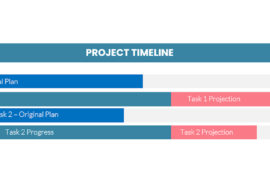 A curious transformation has come over ERP sales people that I’ve been meeting for the last couple of years. No, I’m not talking about that strange affection for changing their acronym like clockwork every 6 months. The last thing I need to hear in this industry is another TLA (3-letter acronym) No, I’m talking about the newfound affection for 3rd party tools. Not so long ago enterprise sales people had only one tune to sing and that was “The only way to integrate is to eliminate all software but ours.” Now, some of us thought that was a trifle arrogant but that didn’t seem to bother ERP sales people who new that their way was the right way and were determined to prove it by eliminating all software in their path and having their clients try to work with just their own systems.
A curious transformation has come over ERP sales people that I’ve been meeting for the last couple of years. No, I’m not talking about that strange affection for changing their acronym like clockwork every 6 months. The last thing I need to hear in this industry is another TLA (3-letter acronym) No, I’m talking about the newfound affection for 3rd party tools. Not so long ago enterprise sales people had only one tune to sing and that was “The only way to integrate is to eliminate all software but ours.” Now, some of us thought that was a trifle arrogant but that didn’t seem to bother ERP sales people who new that their way was the right way and were determined to prove it by eliminating all software in their path and having their clients try to work with just their own systems.
All of a sudden, these same salespeople have embraced 3rd party vendors with the fervour of the born-again crusader. “We can’t be everything to everyone” they now claim, “We are committed to a best of breed solution.”
What, I wonder has brought about this change of heart? Is it perhaps the results of the over-publicized lawsuits of failed enterprise software implementations? Perhaps resistance isn’t futile and 3rd party vendors efforts to stick with their clients are paying off.
I suspect, the new cry of the enterprise salesperson is the most likely scenario. It has turned out that it really is impossible to be everything to everyone.
As everyone who has ever designed and delivered a piece of software knows, the end result carries with it the bias of the author. The notion of a truly objective perspective in writing software is a myth. We can debate whether one package is more or less generic than another but each system carries its own ideas of how to do business. When you consider the major ERP or CRM vendors, it’s fair to say that they are the result of much feedback from the field in how they should be constructed.
But widespread feedback is not a guarantee of software that works for everyone. In fact, the more people involved in a design decision, the more likely you are to end up with something that is not useful to anyone. Software design through the consensus of a committee is a nightmare that thankfully results in very few software systems. Anyone who doubts this should try assembling a 30 person committee to work on any design issue and see what a few hours in a room delivers (here’s a hint – keep the Tylenol handy). No, the best chance for success in enterprise systems design is more likely to come from widespread feedback to a small, skilled design team who retains full authority to implement design changes as they see fit. All the more reason to believe that the result of such systems design will be a system with the bias’s of the designers in evidence.
Since such systems are being implemented in major sized organizations, the likelihood of it being able to meet the needs of the entire organization seem remote.
Also, remember, that these types of systems had to be sold. The marketing influence for an enterprise system will always be biased to what decision makers desire. Perhaps to no one’s surprise, the senior management and senior finance department personnel who are most often involved in these decisions were attended to first.
Perhaps the only surprise is that it has taken this long for the idea of a “best-of-breed” solution to be popular with such vendors to catch on. I suppose it’s the result of the length of time it takes to implement an enterprise ERP system.
There is a pattern to most of the post-implementation stories I’ve heard. The core Financial functionality implements just fine. The General Ledger, AR, AP and perhaps billing move forward without much trouble. Translating legacy data into the system proves the biggest challenge along with training the staff to work in the new system and designing and implementing new procedures to follow.
The system begins to settle in a routine and now attention turns to the secondary systems. Perhaps this is inventory or project control or time and attendance or manufacturing control. It is in these secondary systems that much more serious implementation challenges arise.
First of all, it is possible that the decision to use this enterprise software was made outside the control of the people who have been running these secondary systems. That generates resistance before the work even starts. It is also possible that the same functionality that made the system attractive for management makes it equally unattractive to end users working on secondary systems. For example, I’ve seen project management cost reports from an ERP system that were popular with management only to find that what appear to be rolled-up summary management reports are in fact the lowest level of detail permitted by the system and the tens of thousands of tasks that must be managed in the project system could never be effectively managed in the enterprise ERP.
There are many examples of such mis-matches in functionality. The old pitch for ERP systems was that everything would be integrated and it was worth trading some level of functionality for the benefit of every element of data being tied together. Out in the field however, it turns out that sometimes the cost of being integrated is by far outweighed by the benefit of using tools designed for their level of use.
It places the enterprise software vendors in a very different position. Suddenly they’re very interested in adopting partners who can integrate with their own systems. This is likely to open up access to the finance system market to mid-range players who have been unable to offer an integrated, across-the-enterprise system but can offer an open architecture finance system which is well suited to interfacing with other best-of-breed tools.
Best of breed? It sounds like a great idea to me.




